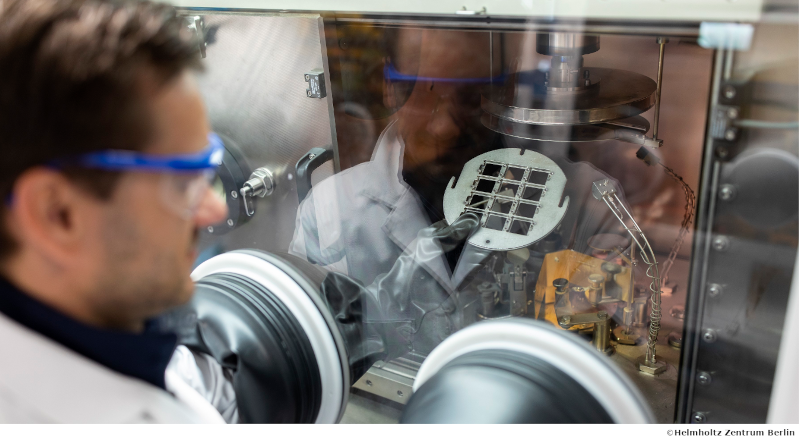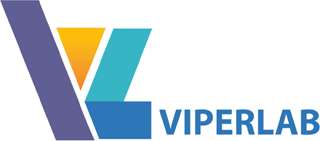- Home >
- Job opportunities >
- Postdoc (f/m/d) for Photoelectron Spectroscopy of Materials and Interfaces for Perovskite Solar Cells
Postdoc (f/m/d) for Photoelectron Spectroscopy of Materials and Interfaces for Perovskite Solar Cells
published date : Jan, 23rd 2023
Deadline date : Feb, 14th 2023
Starting date : Not available yet
Country : Germany
Position : Postdoc (f/m/d) for Photoelectron Spectroscopy of Materials and Interfaces for Perovskite Solar Cells
Department : Perovskite tandem solar
Duration : Fixed term contract for 36 months.
Working time : 39-hour week - Flexible work hours with flexitime


Postdoc (f/m/d) for Photoelectron Spectroscopy of Materials and Interfaces for Perovskite Solar Cells
Reference No.: SE 2022/55
Helmholtz-Zentrum Berlin (HZB) is a research center for fundamental and applied research in the field of energy materials. HZB operates advanced analytics, such as the large synchrotron facility BESSY II. For the next generation of photovoltaics (PV), HZB performs materials research and device development up to the industrial level. The department of perovskite tandem solar cells develops metal halide perovskite solar cells and currently holds two world records for the highest efficiencies in perovskite-silicon (32.5%) and perovskite-CIGS (24.2%) tandem solar cells.
The investigation of fundamental properties of the perovskite and contact layers and their interfaces is key to understand efficiency limiting factors. To this end, HZB use, among other methods, various photoelectron spectroscopy (PES) techniques, for example to elucidate the band structure at the perovskite/C60 electron contact. At the turn of 2022/23, this work will be put on a new footing:
HZB will commission a new integrated UHV tool with an evaporator/sputter chamber and state of the art XPS/UPS analytics. In addition to classical UPS and monochromatized XPS, a near-UV source with variable photon energy (hv = ~ 3...7 eV) will be set up. In the so-called constant final state yield mode, HZB will use this unique tool to elucidate valence band and defect state densities of perovskite-relevant materials and interfaces, determine band offsets at heterojunctions with unprecedented precision, and much more.
As a highly motivated postdoc in the field of photoelectron spectroscopy and related analytical methods, you will conduct research on materials for cutting edge perovskite and tandem solar cells. If you enjoy advancing modern and unique PES methods for materials analysis and collaborating with PostDocs, Master and PhD students in our international and multidisciplinary group, you've come to the right place!
Your Tasks
- You will characterize and analyze semiconductor and contact layers as well as layer stacks for perovskite solar cells using photoelectron spectroscopy (monochromatic XPS, UPS).
- You will use special near-UV photoelectron spectroscopy (NUPS, CFSYS) developed at HZB for characterization of the valence band and band gap states in semiconductors, as well as for direct determination of band offsets in semiconductor layer stacks.
- You will improve the spectroscopy methods further by adapting the measurement hardware and software as well as the methods for data analysis.
- You will analyze data of the combined PES variants (XPS, UPS, near-UV) with existing methods and develop them further.
- You will select and apply accompanying material characterization methods adapted to the specific problem, such as optical reflection/transmission, electrical conductivity, spectral and time-resolved photoluminescence, XRD, etc.
- You will coordinate research work and experiments in cooperation with institute and industry partners.
- You will publish scientific results and prepare project proposals for the acquisition of new third-party funding projects.
Your Profile
- Completed doctorate in physics, materials science, chemistry or a comparable field of study
- In-depth knowledge of the theory, practice and data analysis of photoelectron spectroscopy with X-ray and UV excitation (XPS, UPS)
- In-depth expertise in the physics of semiconductor surfaces and heterointerfaces
- In-depth knowledge of semiconductor technology and the physics of solar cells
- Basic knowledge of Labview and/or Python programming languages
- Excellent analytical skills
- Excellent communication and organizational skills
- Very good English skills
- Enthusiasm for solar cells, with a drive for deeply understanding their working mechanisms
- Team spirit
Your Benefits at HZB
- Advanced analytical laboratories, including the Berlin electron synchrotron BESSY II
- State-of-the-art device processing equipment maintained by experienced engineers
- The opportunity to optimize industry-relevant processes for the next generation of photovoltaics
- A growing (> 20 people), highly motivated group with a pleasant atmosphere, supportive environment and regular social activities
- Career guidance, specific training offers, and networking with peers provided by the Graduate Center and Postdoc Office
- Work-life balance
- Flexible work hours with flexitime
- 39-hour week
- 30 days paid leave
- Mobile working on up to three days/week
- Comprehensive counselling services for family and career
- Health management and company sports programmes
- Financial support for public transport (Jobticket)
- Continuing education opportunities
Fixed term contract for 36 months.
The salary is based on the Collective Agreement for the German Public Service (TVöD-Bund).
How to apply
HZB look forward to receiving your application via their application management system by 14.02.2023. For reasons of data protection regulations, HZB is unfortunately unable to consider applications that reach them by email or by mail in the application process.
HZB strives to increase the proportion of female employees and are therefore particularly pleased to receive applications from women. Disabled applicants with equal aptitude are given preference.
For German version, please click on the following link: German Version.
Contacts
| |
Dr. Lars Korte HZB | ||
| +49 30 8062 41351 korte@helmholtz-berlin.de |

